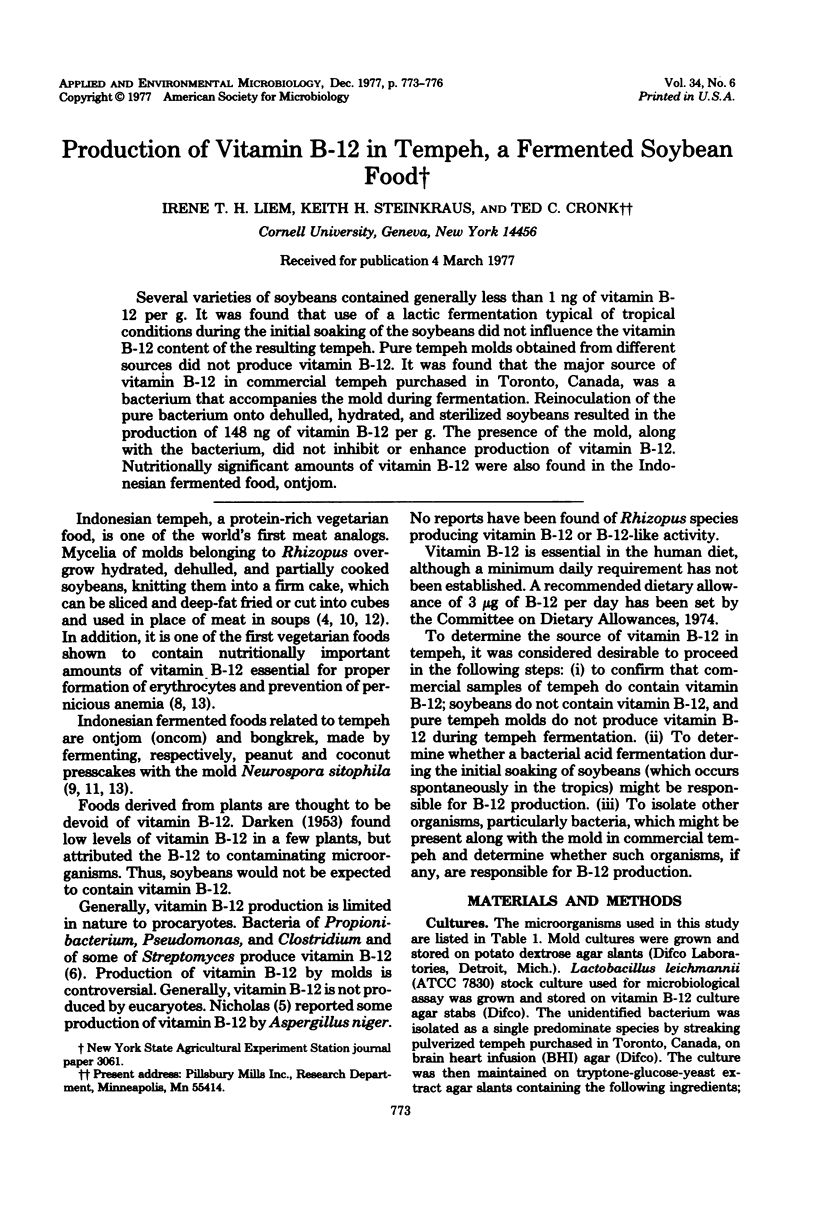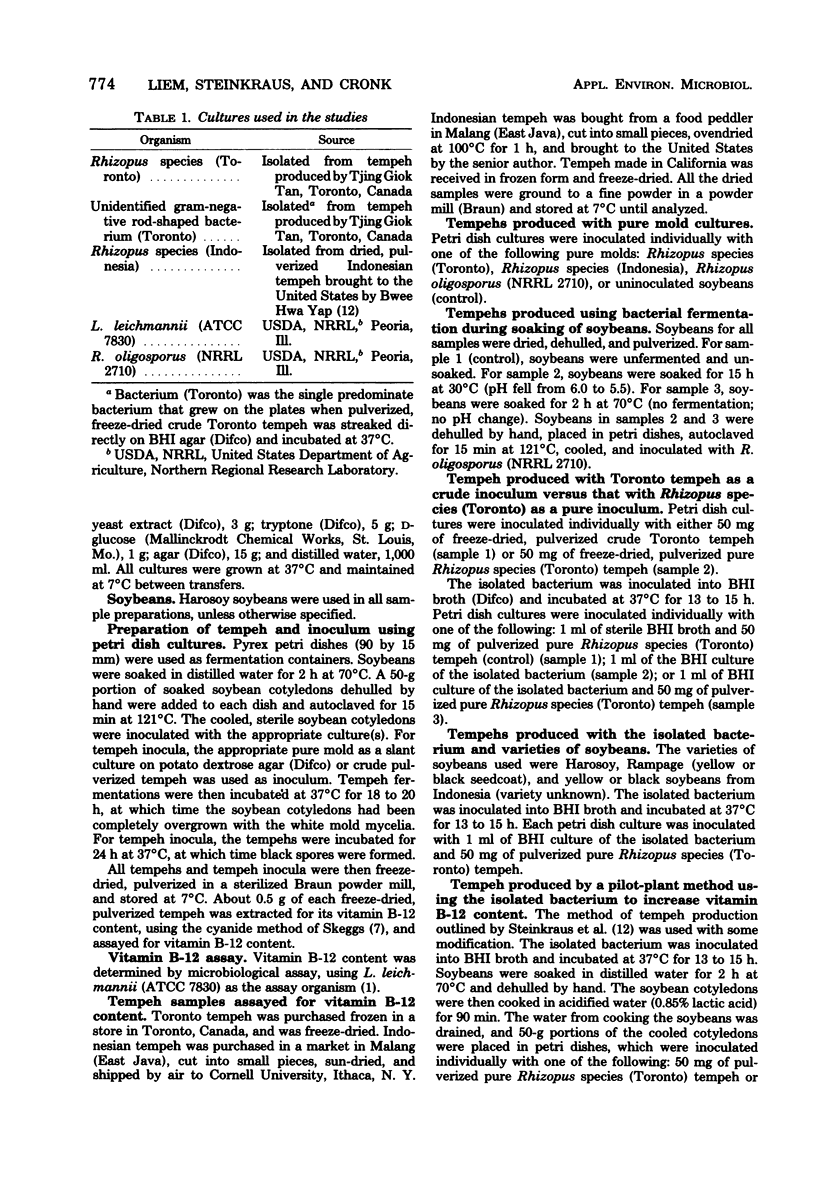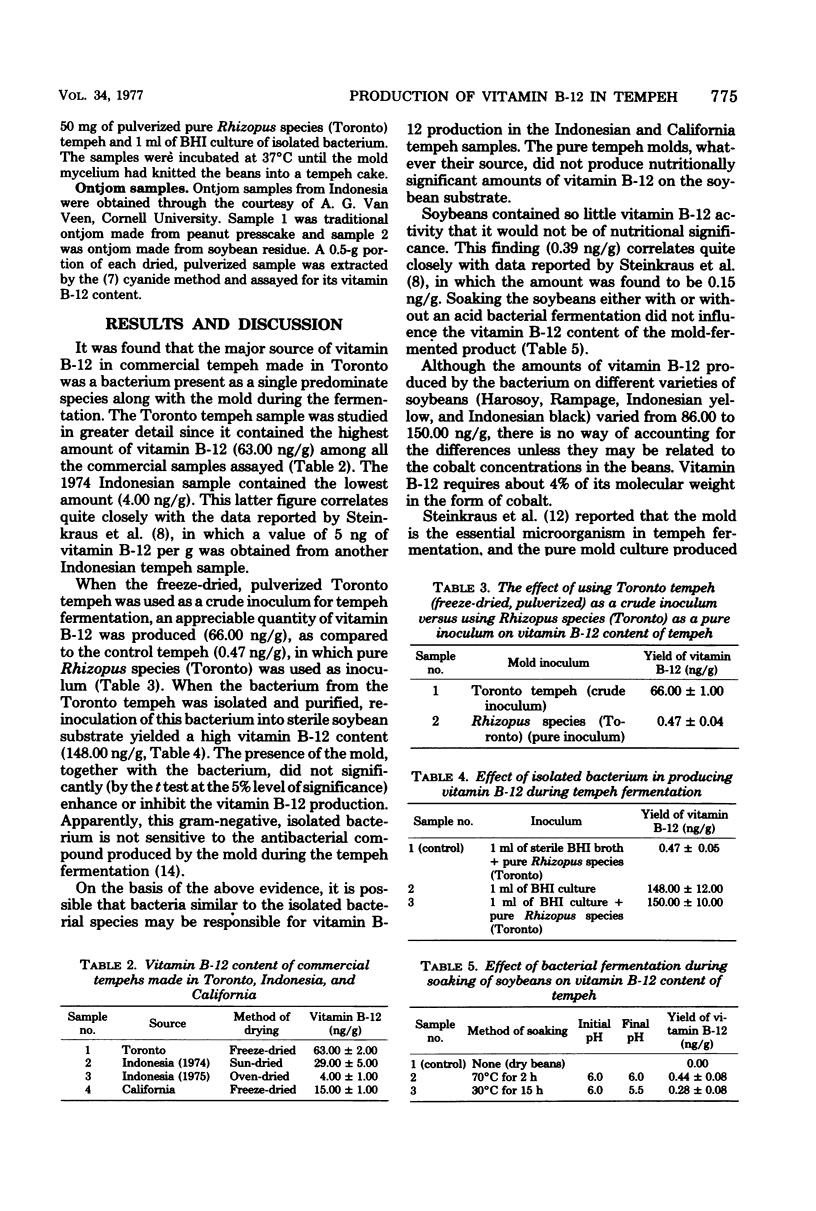Abstract
Several varieties of soybeans contained generally less than 1 ng of vitamin B-12 per g. It was found that use of a lactic fermentation typical of tropical conditions during the initial soaking of the soybeans did not influence the vitamin B-12 content of the resulting tempeh. Pure tempeh molds obtained from different sources did not produce vitamin B-12. It was found that the major source of vitamin B-12 in commercial tempeh purchased in Toronto, Canada, was a bacterium that accompanies the mold during fermentation. Reinoculation of the pure bacterium onto dehulled, hydrated, and sterilized soybeans resulted in the production of 148 ng of vitamin B-12 per g. The presence of the mold, along with the bacterium, did not inhibit or enhance production of vitamin B-12. Nutritionally significant amounts of vitamin B-12 were also found in the Indonesian fermented food, ontjom.
Full text
PDF



Selected References
These references are in PubMed. This may not be the complete list of references from this article.
- Skeggs H. R. Microbiological assay of vitamin B12. Methods Biochem Anal. 1966;14:53–62. doi: 10.1002/9780470110324.ch2. [DOI] [PubMed] [Google Scholar]
- Wang H. L., Ruttle D. I., Hesseltine C. W. Antibacterial compound from a soybean product fermented by Rhizopus oligosporus. Proc Soc Exp Biol Med. 1969 Jun;131(2):579–583. doi: 10.3181/00379727-131-33930. [DOI] [PubMed] [Google Scholar]
- van Veen A. G., Steinkraus K. H. Nutritive value and wholesomeness of fermented foods. J Agric Food Chem. 1970 Jul-Aug;18(4):576–578. doi: 10.1021/jf60170a038. [DOI] [PubMed] [Google Scholar]


